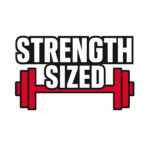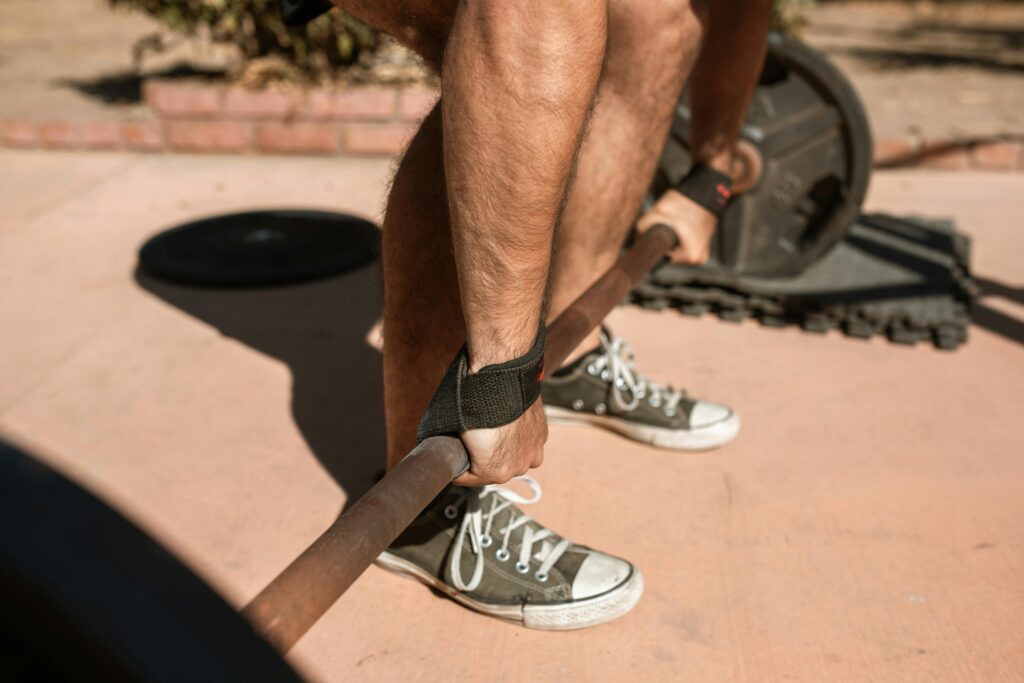Starting a strength training routine is exciting, but it’s easy to run into common beginner lifting mistakes without realizing it. Most new lifters make a few errors early on — and while that’s totally normal, these habits can hold you back over time. The problem is when those habits stick around and start slowing your progress or increasing your risk of injury. The good news? Every mistake on this list is fixable, and some take less than five minutes to correct.
Whether you’re training at home, in a commercial gym, or still building your confidence, this guide covers the most common beginner lifting mistakes that hold people back—and how to avoid them so you can lift smarter, safer, and stronger.
As an Amazon Associate, I earn from qualifying purchases. This helps support the site at no extra cost to you.

Skipping the Basics (Form Over Ego)
A lot of beginners jump into lifting thinking they need to go heavy right away to prove something. It’s easy to get caught up watching stronger lifters and feel like you have to chase bigger numbers. But this often leads to technique breakdown, which slows your progress in the long run. While a little “cheating” might make sense for experienced lifters, beginners who rely on momentum instead of using the right muscles are building bad habits from the start.
Good form isn’t just about avoiding injury — it’s about lifting more efficiently. If your knees cave in during squats or your hips shoot up first in a deadlift, you’re leaving strength on the table. Worse, you’re building strength on a shaky foundation. You might still make progress at first, but as the weights get heavier, weak links will start to show.
Start by learning the basic movement patterns: squat, hinge, push, pull, and proper core bracing. Film your lifts, check your technique, and don’t be afraid to ask someone experienced for feedback. You’re not wasting time by using lighter weights — you’re setting yourself up to actually get somewhere.
Progress comes from consistency and quality, not ego.
Not Sticking With a Program
One of the most overlooked beginner lifting mistakes is changing programs too often. You jump from one workout to the next, copy what someone else is doing that day, or get distracted by the latest trending split on social media. The result? No consistent progress, no tracking, and no real structure.
At the beginner stage, almost anything will work — but that doesn’t mean doing everything is better. Strength and muscle gains come from doing the same core lifts regularly and gradually adding weight, reps, or control. If you’re changing movements every week or chasing “muscle confusion”, you’re not giving your body enough time to adapt and grow.
You don’t need a complicated program. You just need one that includes the basics, fits your schedule, and keeps you accountable. That could be a proven beginner program like Starting Strength or one designed by a coach. The important thing is to stick with a program for multiple weeks.
Program hopping feels exciting in the moment, but long-term results come from showing up and repeating the fundamentals. Pick a plan, track your progress, and see it through.
Not Lifting Heavy Enough
One of the most common beginner mistakes is underestimating what you’re capable of. Many lifters stay in their comfort zone, using weights that are too light to build real strength or muscle.
There’s nothing wrong with starting light to learn proper technique. But at some point, the weight needs to challenge you. If you’re finishing every set and still able to talk comfortably or bang out extra reps with no effort, you’re not training hard enough to drive results.
“Lifting heavy” doesn’t mean maxing out every session. It means using a weight that forces you to focus, move with intent, and stop one or two reps before failure. For most beginners, that’s somewhere between 5 and 12 reps per set, using a load that feels difficult but manageable with good form.
Progressive overload is what drives progress. If you’re consistently finishing your sets feeling like you could have done more, it’s time to increase the weight, reps, or both on your next workout.
Poor Recovery Habits
Training hard is important, but it’s only half the equation. What you do outside the gym matters just as much — and poor recovery habits can quietly stall your progress without you realizing it. Recovery isn’t about foam rolling or supplements. It’s about sleep, nutrition, and managing overall fatigue.
One of the most common mistakes is simply not eating enough, especially protein. Your body needs fuel to repair and grow muscle tissue. If you’re lifting regularly but under-eating, progress will be slow, and you may feel constantly drained. Aim for balanced meals and make protein a priority — around 1.6 to 2.2 grams per kilogram of bodyweight is a solid target for most lifters.
Sleep is another major factor. Strength gains and muscle repair happen when you rest, not while you’re grinding through sets. Skimping on sleep makes training feel harder, reduces motivation, and slows down results. If you’re serious about getting stronger, aim for at least 7–8 hours of quality sleep each night. Tools like a basic fitness band can help you stay consistent and spot recovery trends over time.
Also, don’t ignore rest days. More isn’t always better. Lifting six or seven days a week might sound productive, but if you’re not recovering well between sessions, you’re just spinning your wheels. Give your body time to adapt.
Lifting breaks your body down. Recovery builds it back up. Don’t overlook it.
Gym Etiquette Mistakes
Lifting isn’t just about how much weight you move. It’s also about how you behave in the gym. Most beginners don’t mean to be rude or disruptive, but without knowing the “unwritten rules”, it’s easy to make a bad impression.
Here are a few of the most common gym etiquette slip-ups to avoid:
- Not re-racking weights: Always put your plates and dumbbells back where they belong. It keeps the space safe and shows respect for others.
- Taking up all the equipment: Supersets and dropsets are fine, but during busy hours, don’t hog multiple machines or half the dumbbell rack for yourself.
- Not wiping down equipment: Sweat happens. Wipe down benches, machines, and mats after use. It’s basic hygiene.
- Hovering too close: Give people space while they lift. Hovering or standing right behind someone breaks focus and makes everyone uncomfortable.
- Recording without awareness: Filming your sets is fine, but don’t capture others without consent. Avoid blocking walkways or tying up equipment to get the perfect angle.
Gym etiquette doesn’t mean being perfect. It means being aware and respectful. If you’re mindful of the people around you, you’ll have a much better training environment—and so will everyone else.
Beginner Lifting Mistakes Women Often Make
These beginner lifting mistakes can especially affect women who are new to strength training—often because of outdated advice, gym culture, or lack of confidence. These aren’t about doing something “wrong”, but about getting stuck in patterns that don’t lead to real progress.
Avoiding heavy weights: One of the most persistent myths is that lifting heavy will make you “bulky”. In reality, building muscle takes time, consistency, and often a calorie surplus. Lifting heavier weights with good form won’t make you big overnight—it’ll help you get stronger, more athletic, and more confident.
Sticking to the same light routine: A lot of women tend to stay in the 15–20 rep range using tiny dumbbells or machines only. While this can be useful for accessory lifts, it’s not ideal for building strength. Don’t be afraid to lower the reps, increase the weight, and challenge yourself — especially on compound lifts like squats, deadlifts, and presses.
Letting intimidation slow progress: Feeling out of place in the free weight area is normal, but don’t let it keep you stuck on the sidelines. Start simple, stay consistent, and remember that nobody is paying as much attention to you as you think. You belong there just as much as anyone else.
The takeaway? Don’t hold back. You’re allowed to take up space, lift heavy, and train with intent. Confidence comes with experience—and strength follows.
Comparing Yourself to Everyone Else
One of the fastest ways to kill your confidence in the gym is to constantly compare yourself to other lifters. Whether it’s someone squatting twice your bodyweight or a fitness influencer on your feed, comparison shifts your focus away from your own progress — and that’s where it needs to be.
Everyone starts at a different level. You don’t know how long someone’s been lifting, what their goals are, or what sacrifices they’ve made to get there. Their journey has nothing to do with yours.
What actually matters is showing up, doing the work, and getting a little better over time. Track your own progress — not someone else’s numbers. Celebrate the small wins: adding 5 pounds to your lifts, hitting a new rep goal, or just sticking to your routine consistently.
Confidence in the gym doesn’t come from being the strongest person there. It comes from knowing you’re showing up for yourself — and improving on where you were yesterday.
Final Thoughts
If you’re just starting out, remember: everyone makes mistakes. What matters is how quickly you course-correct. Focus on building good habits, stay consistent with your training, and don’t be afraid to challenge yourself. Strength takes time — but if you lift smart and stay patient, it will come.
Need help choosing the right gear to support your lifts? Check out our guide on weightlifting belt sizes or our take on do weightlifting shoes actually help.


